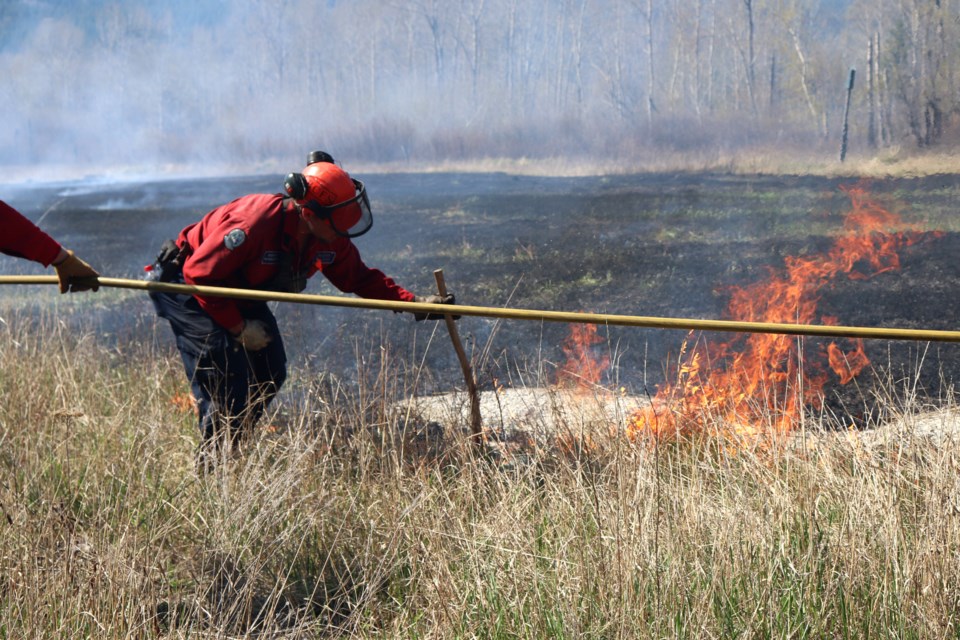The Sunshine Coast Regional District’s (SCRD) newly developed Community Wildfire Protection Plan includes 43 recommendations to reduce wildfire risk – and says now is a critical time to act.
Much of the Sunshine Coast’s forests pose a moderate to moderate-to-high wildfire probability, the SCRD board heard at the June 17 planning and community development meeting.
Diamond Head Consulting Ltd.’s Conor Corbett told directors that this probability is estimated based on how many coniferous trees – which are highly flammable – and steep slopes are on the Coast, among other factors.
He said there are many signs of tree stress and dead or dying trees in the area, which could be attributed to droughts in previous years, and have the potential to become wildfire fuel.
Since almost every single-structure home is within a kilometre of a natural forest, the wildfire risk is also moderate or moderate-to-high for much of the Coast.
Of its recommendations, the Community Wildfire Protection Plan (CWPP) lists 24 as high or moderate priority, 13 as medium priority and one as low priority.
In his presentation, Corbett highlighted some of the recommendations, including fuel management, FireSmart planning and hiring a FireSmart coordinator, community education, and training for wildfire response.
While most of the recommendations are eligible for Community Resiliency Investment (CRI) program funding, it is unlikely all the recommendations will be implemented, Corbett said. The cost to fully implement one of the examples he gave is around $10 million, so the local governments will have to pick and choose which recommendations to take on.
Most applications for CRI, Corbett said, are approved and partnering applications between municipalities are eligible for more funding. If the wildfire plan continues as a partnership between the SCRD, Sechelt Indian Government District (SIGD), District of Sechelt, and Town of Gibsons, the base funding would be about $600,000 annually for the five-year plan.
Corbett presented four key themes of wildfire risk that are unique to the Sunshine Coast. There’s uncertainty when it comes to predicting wildfire risk on the Coast both because of the unknown future impacts of climate change and, since wildfires have been historically rare in coastal ecosystems, information about wildfires from other regions such as the northern Interior and Okanagan are applied to the Sunshine Coast, Corbett said. Third, this is a critical time to mitigate wildfire risk. Finally, cooperation between local governments and stakeholders is also critical.
Although the last two wildfire seasons in B.C., in 2019 and 2020, were “quiet,” Corbett said 2017 and 2018 were the worst two fire seasons on record.
“It just gives you an idea of the volatility of what we’re looking at in the near future, where we can have very quiet seasons and very, very busy seasons. Most likely 2017 and 2018 are going to be what’s typical in a fire season in the next 10 to 20 years,” Corbett said.
Directors voted to request the FireSmart BC program prepare materials specifically for coastal communities, and the CWPP will be sent to the Union of B.C. Municipalities.
A letter of support for the SCRD’s Community Resiliency Investment program grant application from SIGD was included in the SCRD’s June 24 agenda.
The board also voted to refer the CWPP to other local governments to support a coordinated action, and referred the plan to the Sunshine Coast School District No. 46 and Islands Trust for information.



